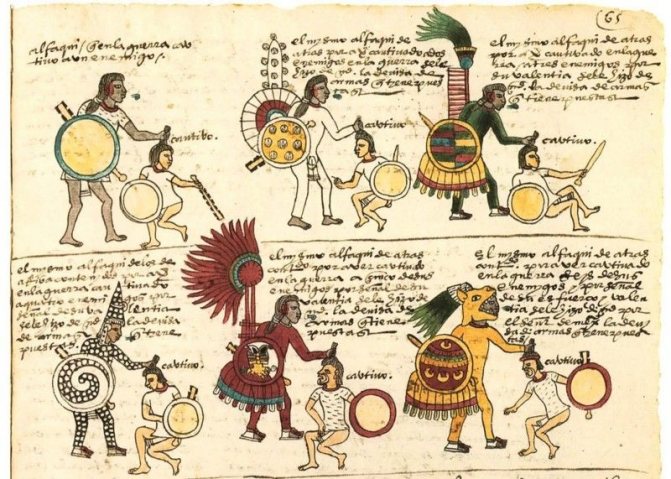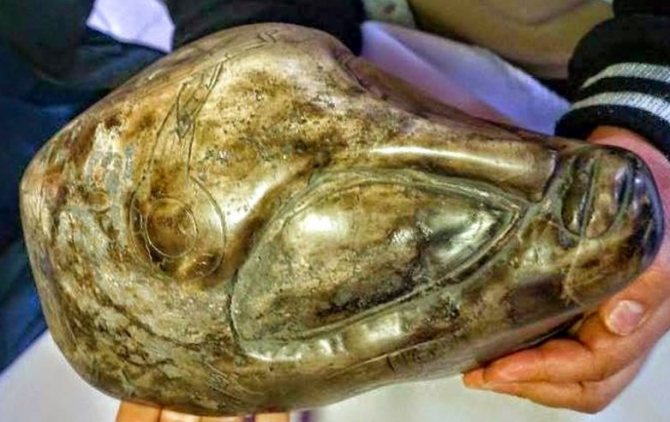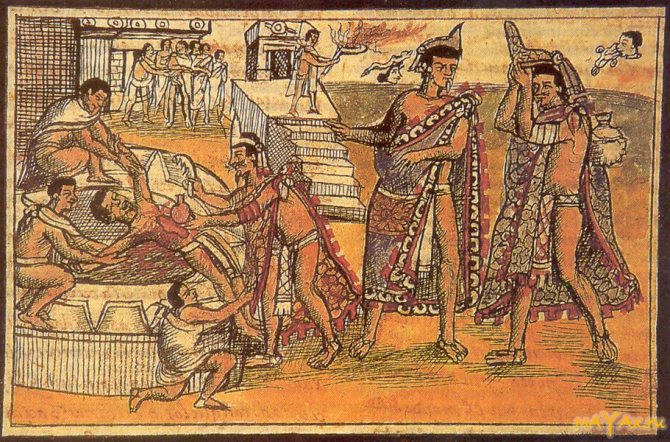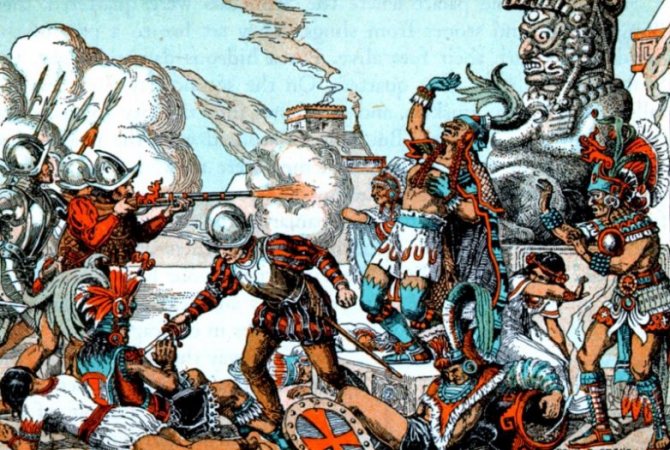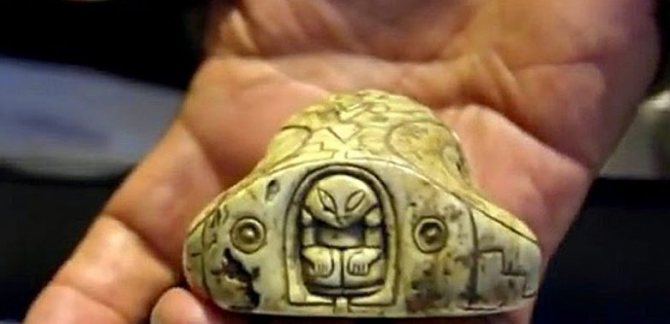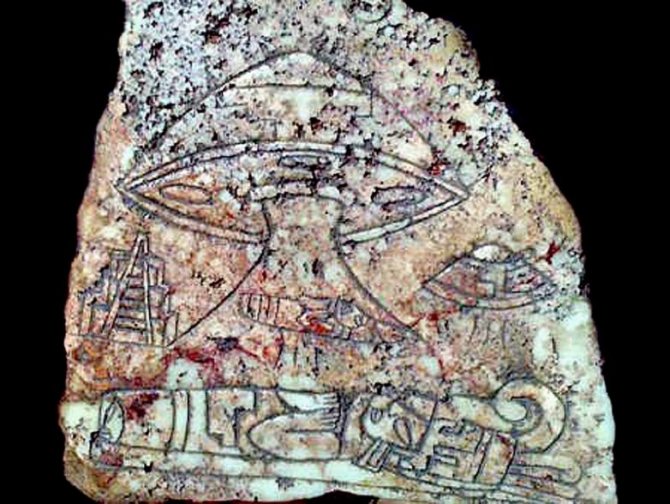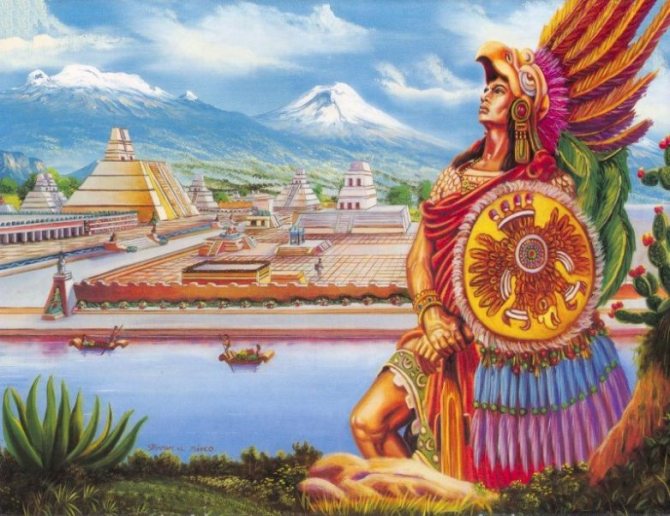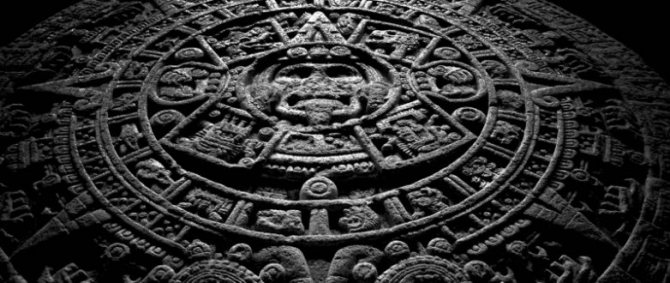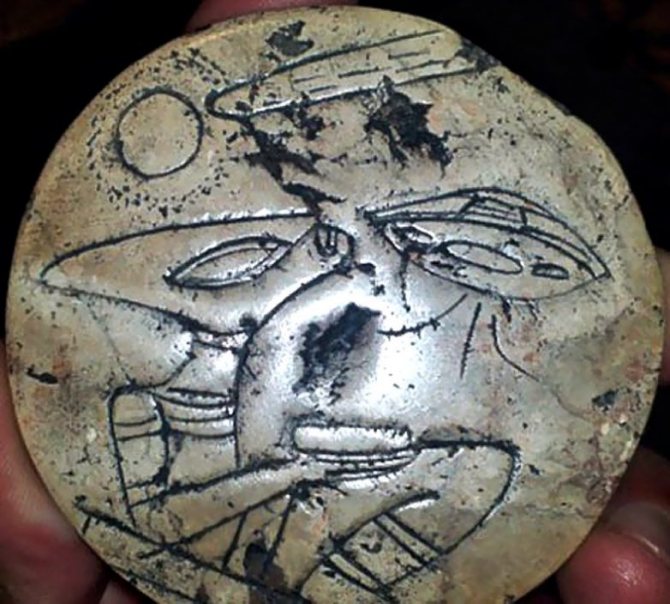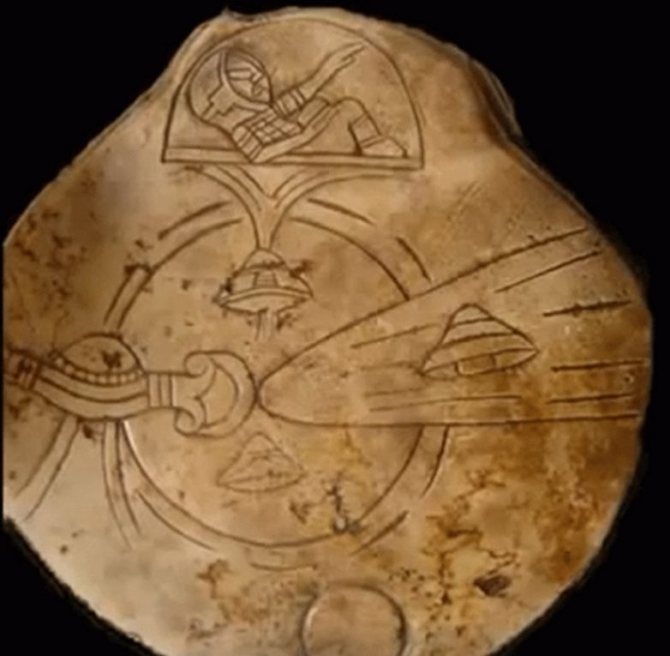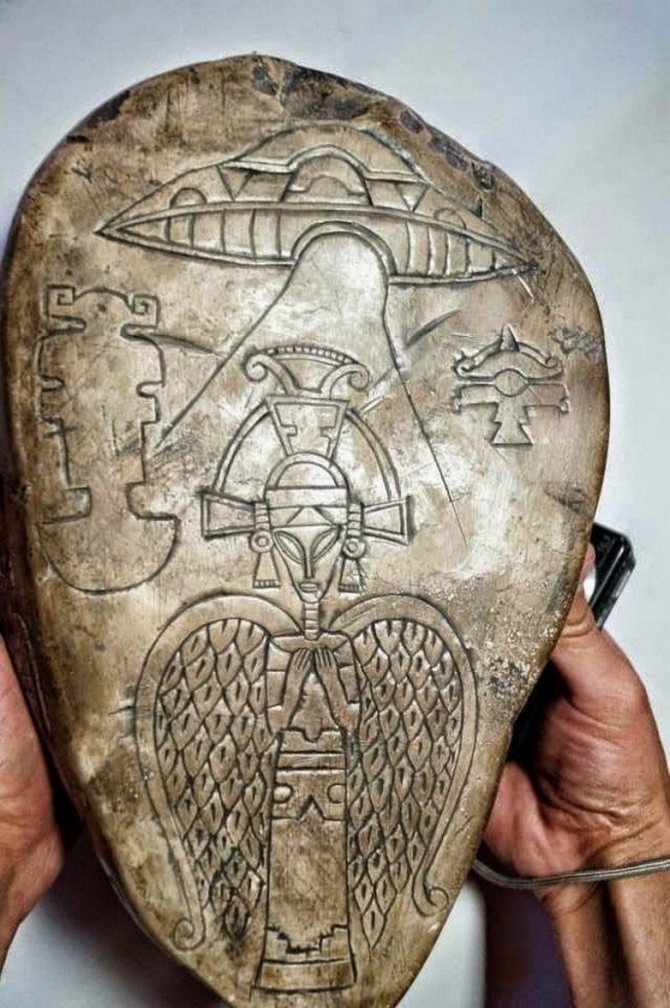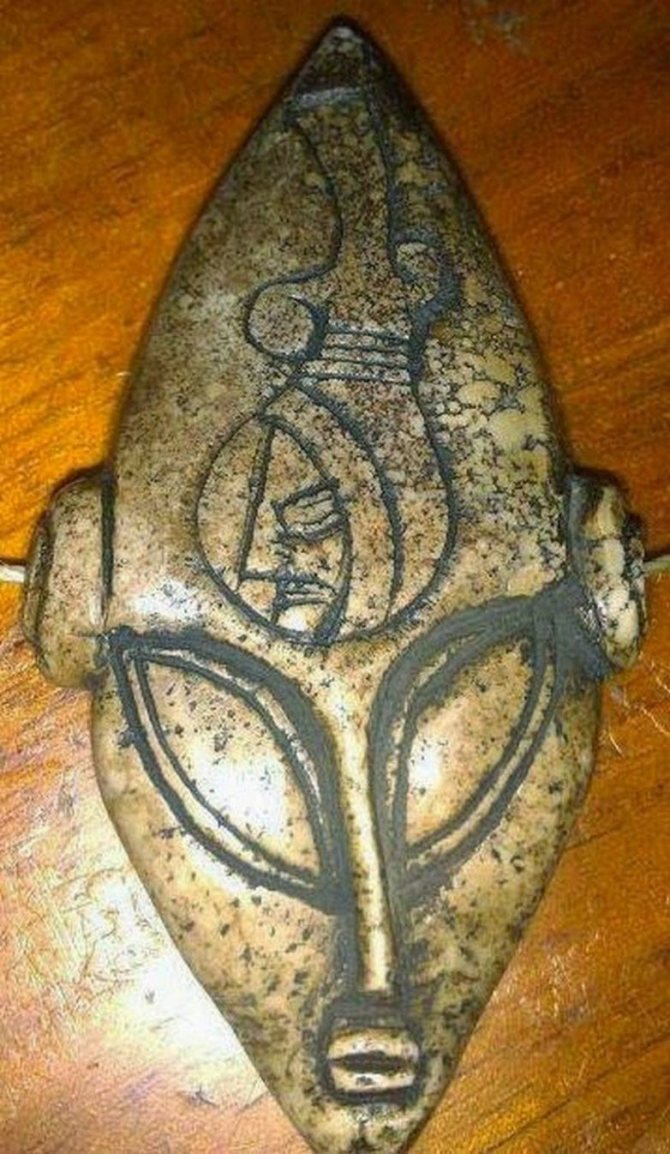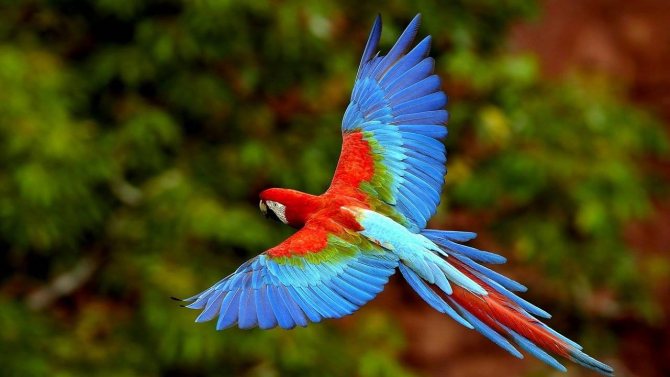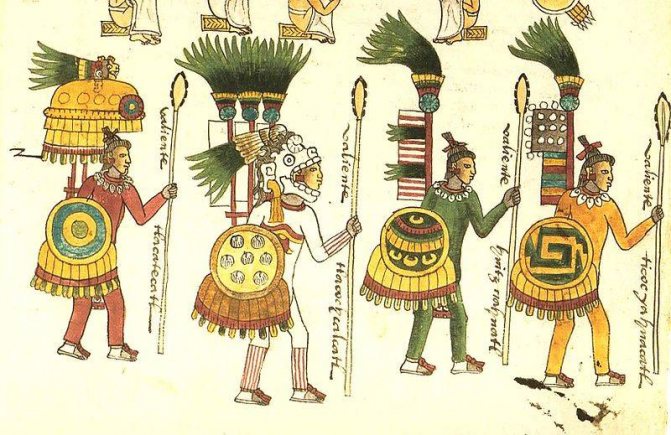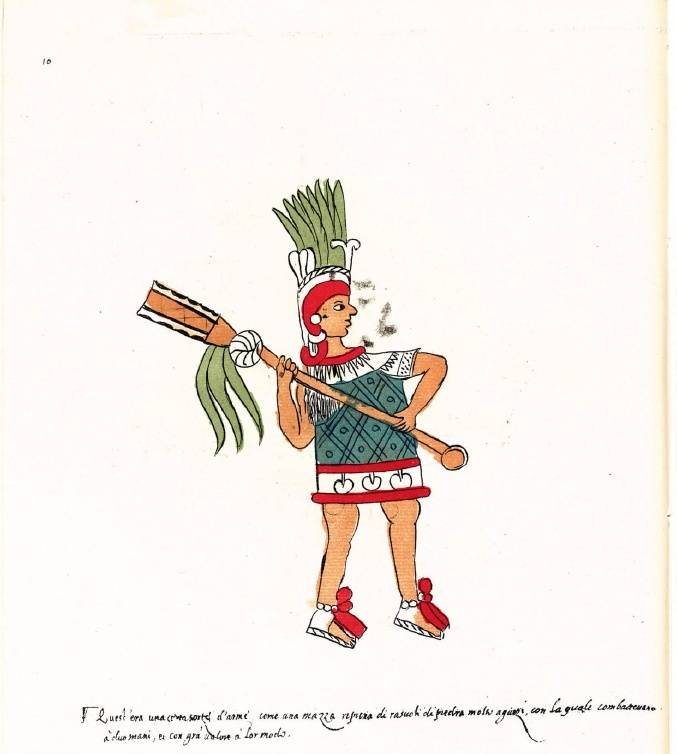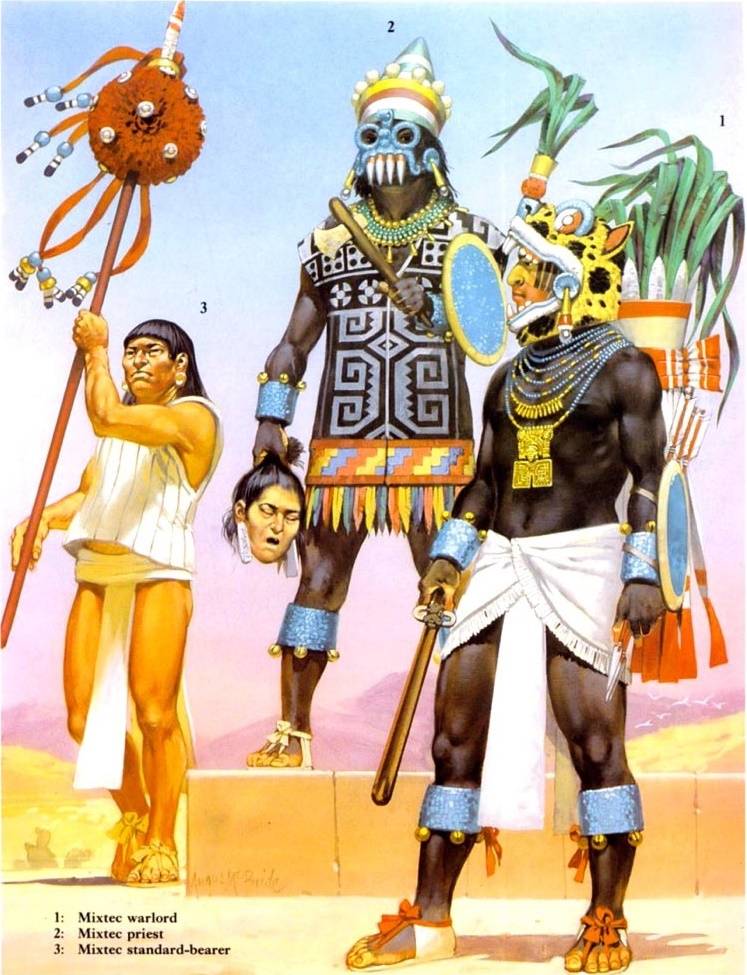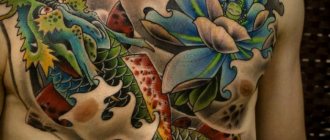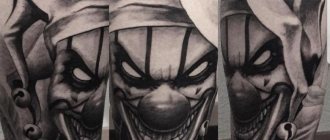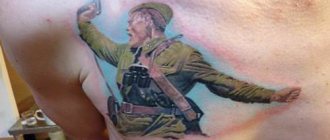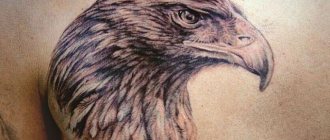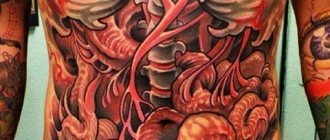Tattoos from ancient times were considered a special work of art. Unlike drawings on paper or wood, they remained permanently on the human body and became a part of it. The Aztecs stood out among the tribes, famous for their mastery of tattooing. The symbolism and ornamentation of the Aztecs adorned the bodies of priests, spiritual, political leaders and all who participated in their special rituals. Aztec tattoos are still popular today, yet many are unaware of their significance.
Mayan tattoos had a deep meaning
The priests assumed that images or other modifications of the body would please the gods. Explanations of the symbolism of tattoos are found on the basis of many texts preserved to this day.
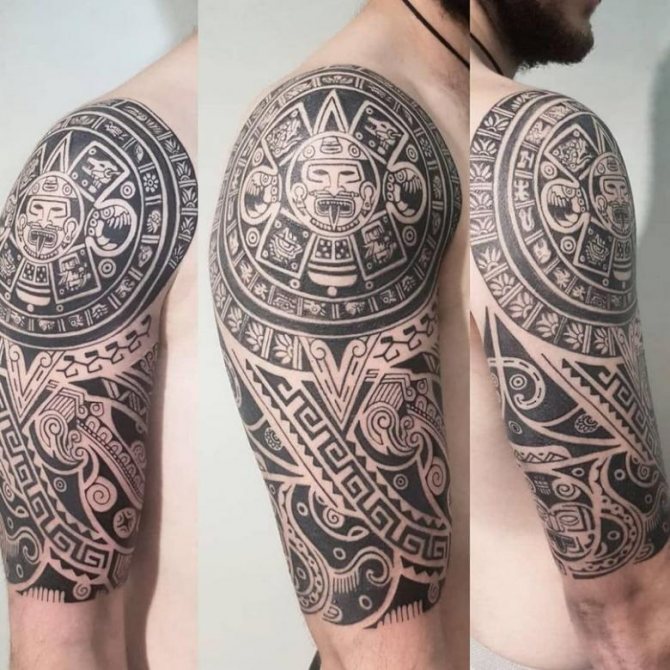
However, the ancient people of the time, except for tattoos, put texts and drawings on the teeth, embedded various objects in the body, deliberately deformed the skull of children to form an elongated shape of the head.


But tattoos were relegated to a separate category. It was believed that they were used only by brave people, because the application on the body was accompanied by serious pain and a high risk of getting an infection in the wound. The tattoo was revered by the locals.


The tattoos blizzarded prisoners, marked the social status, designated elders or warriors. Some images had a symbolic meaning. They conveyed the journey between the stages of life.
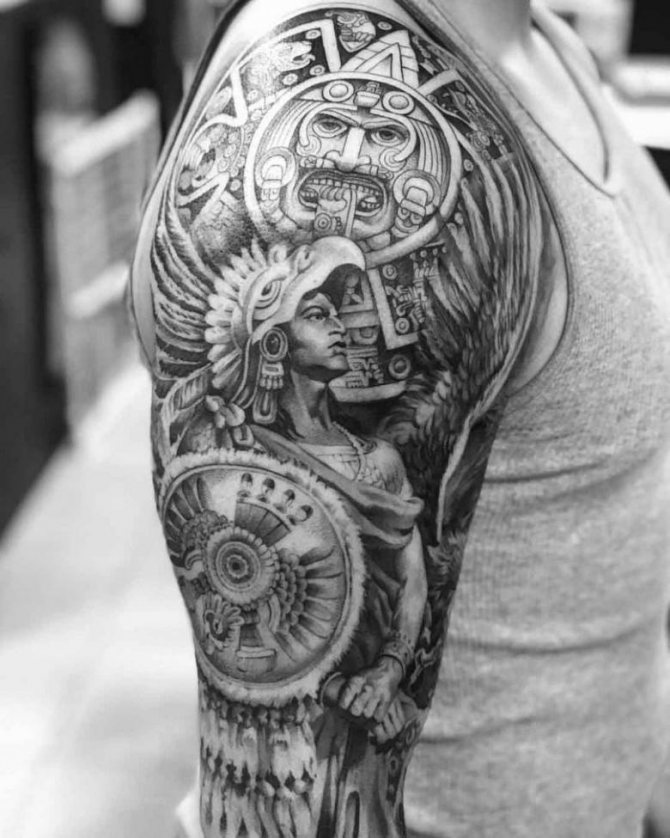

* * *
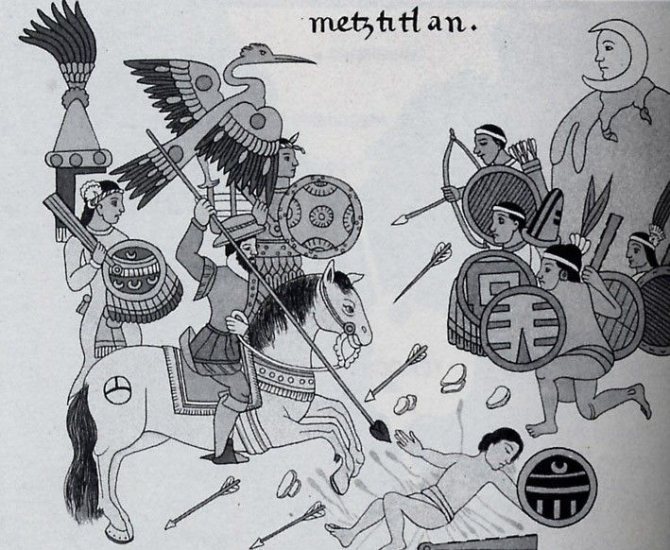

Siege of Tenochtitlan. 16th-century drawing. The Spanish owed their success to the allied Indian tribes. 900 men of infantry and 80 horsemen would never have captured the largest city on the planet.
On November 8, 1519, Hernan Cortés entered Tenochtitlan with his troops. Cortes raised the morale of his soldiers in a rather original way - he flooded the caravels, cutting off all escape routes. Montezuma mistook Cortes for Quetzalcoatl, and the Spaniards for messengers of the sun, and showered them with honors. In response, Cortes captured the emperor and captured the city, but was forced to flee from it in the summer of 1520. A year later, on June 4, 1521, he again besieged Tenochtitlan. The Indians fiercely resisted, but on August 13 the huge metropolis fell. Almost all of its population (at least 200 thousand people) perished in the fighting. The slaughter of cities was not a practice in Europe. The Indians, allies of Cortes, probably did their best.
About 40 percent of the Aztec population died from smallpox brought by the Spaniards (with the highest levels of hygiene such diseases were unknown to them). The invaders destroyed Tenochtitlan and drained Lake Texcoco, ruining the ecology of the region forever. Now Mexico City stands in the place of Tenochtitlan. The city still lacks drinking water.
Why are ancient people getting tattoos these days?
A lot of modern inhabitants apply ancient tattoos out of the inducements of the fashionable flow of time. But the meaning of the ornament is of little interest to anyone, as the main thing is its external beauty. However, the Maya adhered to the meaning of totem, revealing the essence of the image bearer's image. Devotion to cultural values and revered gods was considered important.


If the bearer of the tattoo wanted to express strength, courage or cunning, he resorted to the image of the jaguar. Thanks to the eagle, speed and foresight were expressed. The feathered serpent expressed the benevolence of the god Kukulkan and the high level of spirituality of the owner of the tattoo. The fire-breathing demon represented cruelty, so it was supposed to terrify enemies.


Goal! Stake him!
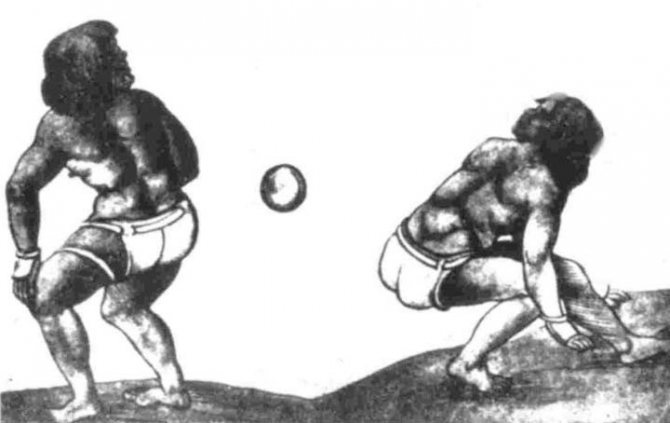

Aztecs playing ball for the King of Spain (1528).
The Aztecs were fans of tlachtli, the ball game. According to one version it was made of rubber, according to another - of stone (in the latter case, it was impossible to play with it without damaging the limbs). The aim of the game was to drive the ball to the opponent's side of the field. If you managed to throw it into one of the two rings on the field, the team won immediately. Only knees and hips were allowed to touch the ball. The game was spiced up by the fact that the losing team was sacrificed (or maybe the winning team as well - historians have different opinions). Bets were placed on the results of games. It was possible to bet anything - even yourself (into slavery). There were cases when rulers lost entire cities.
Loyalty to the emperor
The Maya held the emperor in high esteem because they believed he had been appointed by the gods. They complied with his demands because they believed they came from a god. The image of the emperor on the body can be used as an exclusive totem. Therefore, this option is popular. The main thing is to find a professional tattoo artist.
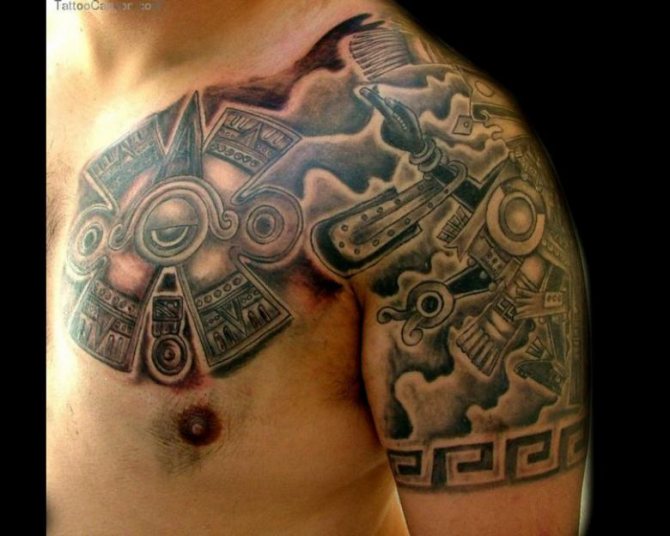

Crystal skulls
Artifacts allegedly pre-Columbian America, allegedly possessing magical powers (curing diseases, improving moods, prophetic visions). The most famous of them, found in 1926, according to unverified researches maintains a constant temperature of 21 degrees. It was carved out of quartz with diamond tools and polished against the sand for 150-300 consecutive years. The age of this and other similar skulls "found" in Aztec and Mayan ruins is estimated to be nearly 4,000 years. However, skeptics who have studied some of the specimens claim that the artifacts were made with jewelry tools no earlier than the 19th century, presumably in Germany. The testimony of "archaeologists" who have mined these skulls since the early 20th century is highly contradictory, so it is safe to say that this is a commonplace forgery.
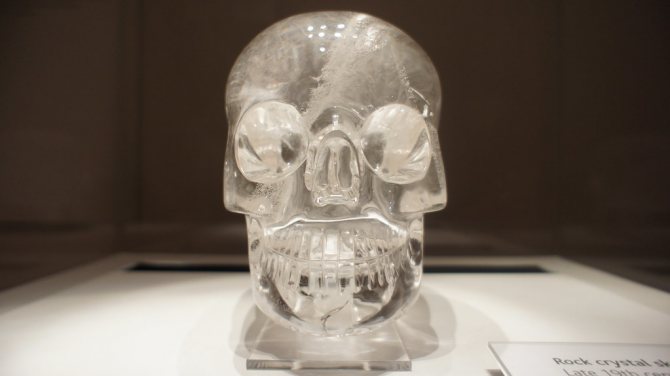

Despite the proven falsity of the skulls, one of them is still on display in the British Museum.
The profound symbolism of the Aztec tattoo
Many tribes have expressed their relationship to the world through the art of tattooing. However, the Aztecs offered an advanced view of decorating the external body image. In fact, they became the trendsetters of fashion trends.


They focused on conveying the characteristics of their civilization through intricate compositions and a variety of themes. The Aztecs expressed worship of the gods, used images for rituals, and inscribed their own achievements and military victories.


The high level of Aztec tattoo art
Various photos show that they reached unprecedented heights of skill, as they placed great importance on tattoos in the culture and social hierarchy of society. They were used for rituals and religious activities.
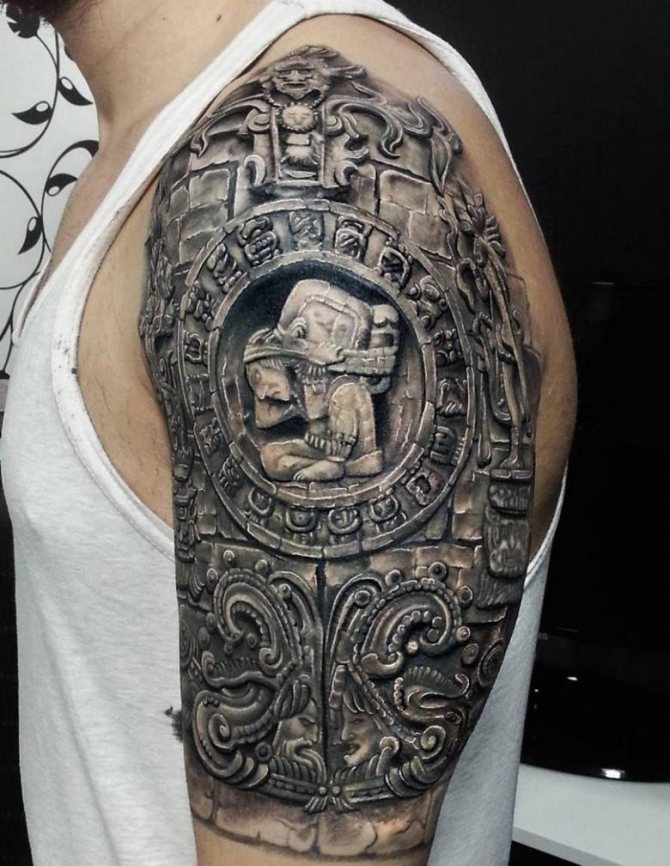

They were applied to the bodies of adults and younger generations. Were distinguished by special style solutions, because they gained popularity among modern people. Thanks to them, fashionistas successfully highlight individuality and emphasize their unique character traits.
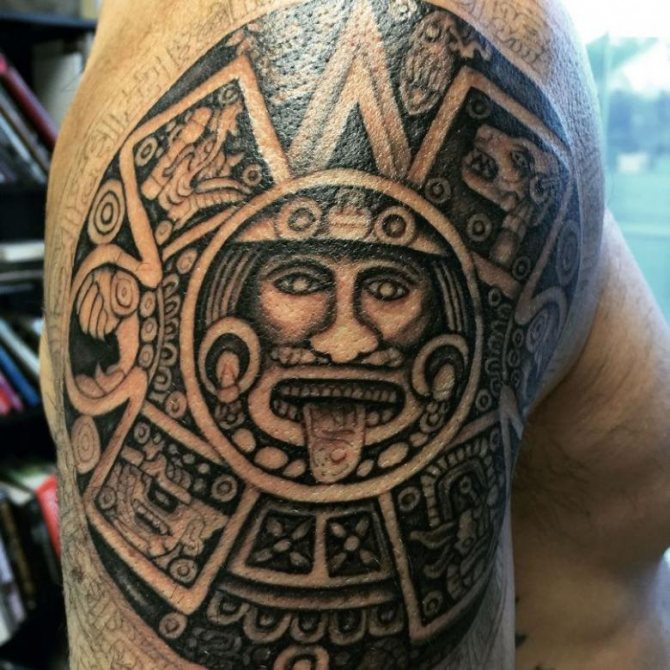

What did the various Aztec tattoos symbolize?
The Indians used many symbols, but the sun god was considered the founder of everything. His name was Huitzilopochtil. He had a special status because he gave life force and guarded the heavens.


Sunrise was associated with the afterlife. On the tattoo, the sun god is rendered as a blue face. Ancient texts are added to the sketch. A heart pierced with a dagger had the same meaning.
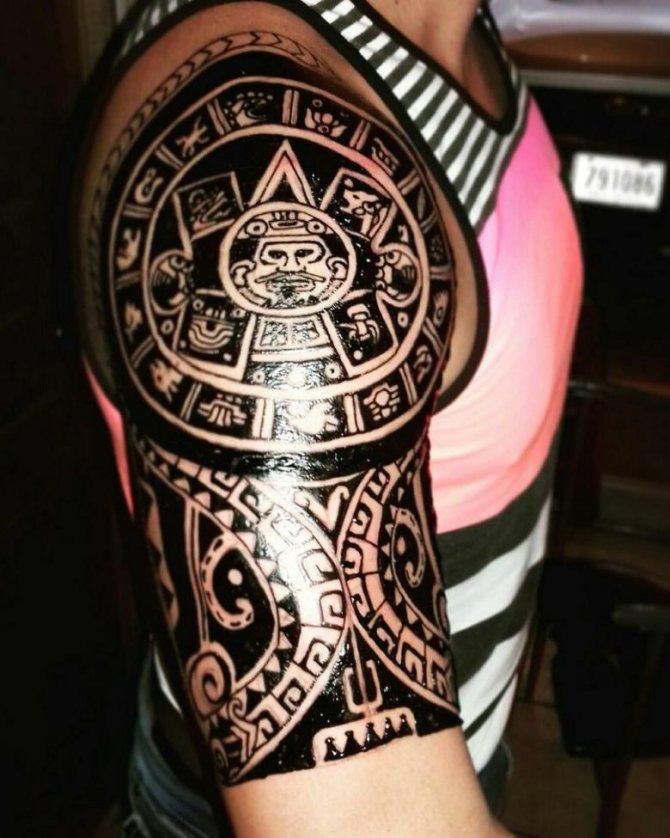

The Aztecs considered it a ritual image of sacrifice to the sun god. The dagger was considered a sacred object. Other interesting images for a modern tattoo:
- A good option for a modern tattoo might be an image of a warrior god based on a tongue out with complementary texts or symbols;
- The god of creative power was drawn in the form of a winged snake. He personifies fertility, wisdom and the power to control the weather. Later this tattoo was adopted by less advanced tribes. It has been popular for 2,000 years and is used today as fashionable jewelry


Often the Indian in the various rock sculpture photos appears with a star, moon, warriors, eagles, princesses, or the Aztec calendar. Any of these options is considered appropriate in our time.
The way to freedom is through the stomach.
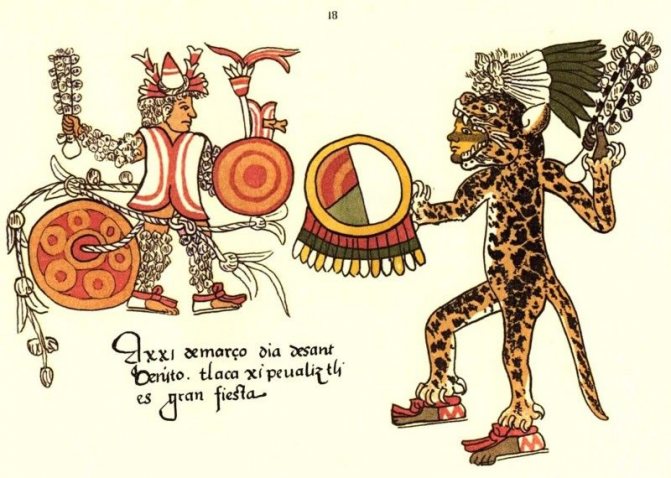

Gladiatorial combat with a captive warrior tied by the leg to a round stone (Codex Magleabeciano).
Anyone could sell himself into slavery (about a year of freedom was given to spend the money) and be ransomed out of it. Slavery was for criminals and debt defaulters. A slave was set free if he could prove that he had been mistreated.
There was also a custom - if a slave ran outside the market walls and stepped on human feces, he was set free. Only the master could apprehend him. An outsider who tried to catch a running slave became a slave himself.
The children of slaves were free. If a slave was negligent (lazy, prone to escape) and resold several times, he was shackled, making it difficult to run through the crowd, or sent to sacrifice.
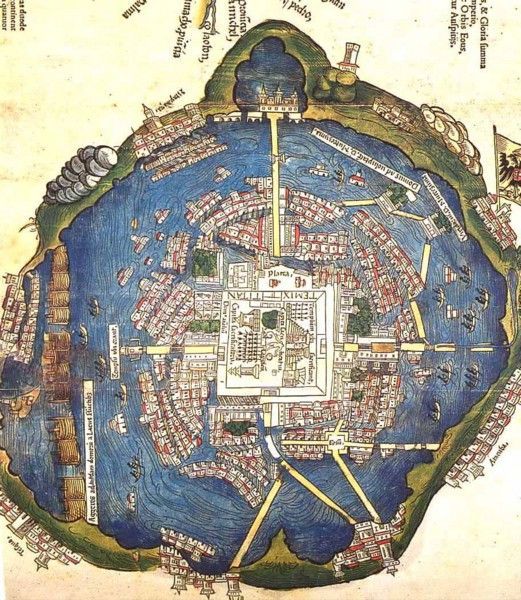

Tenochtitlan
Let's walk through Tenochtitlan, the capital of the empire, sprawled on a lake in the middle of Lake Texcoco.
Dozens of bridges span the lake to the city. In the distance are levees that protect the metropolis from frequent floods. People in loincloths and cloaks look a little like the ancient Greeks. They hurry to Tlatelloloco, the satellite city of Tenochtitlán, where a huge market for 25,000 people is organized. Here you can buy everything from exotic birds and maize to ornate cotton clothing and slaves.
The market has a rich infrastructure with barbers, porters, and even judges to whom you can turn for consumer protection. There is no need to worry about the quality of goods, they are carefully inspected before they reach the shelves.
Tenochtitlan is like Venice. Around the city there are floating gardens made of baskets of silt woven around wooden piles and willows (to reinforce the structure with roots). Between the islands is a network of canals used for irrigation, transportation of goods and fishing. In the central part of the lake water is salty, nothing grows there. Farming is possible only on its outskirts, where the underground springs come out. Drinking water is provided by four kilometers of clay aqueducts coming from the springs of Chapultepec Hill.
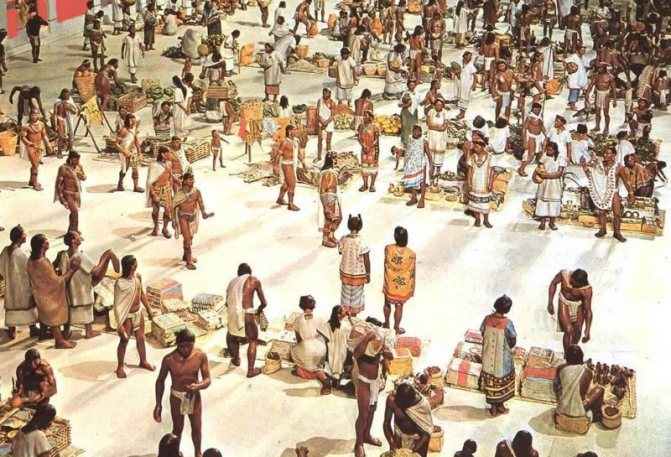

The marketplace in Tenochtitlan. Cocoa could play the role of money, but more often there was a natural exchange, such as cloth for copper axes.
Almost 20% of the population was engaged in agriculture. The crops grown, as well as the tribute coming from the conquered territories, allow to feed about 200 thousand people (according to other sources, the population of the capital reached half a million). The city is divided into four quarters: Teopan, Moyotlan, Cueapopan, and Astacalco.
By the beginning of the 15th century, Tenochtitlan was the largest city on the planet. Only Constantinople could compete with it. The population density is very high - over 15 thousand people per square kilometer. In this case the city is amazing cleanliness. When the Spaniards first arrived in Tenochtitlan they were struck by the brutality of the Indians' religious rituals. But what shocked them even more was the fact that the center of the city was completely devoid of trash. Even the grass that made its way between the stone slabs was carefully weeded out. On this basis, the strange custom of freeing slaves who had stepped in feces becomes quite understandable - there was simply nowhere to find them. It should be remembered that in European cities at that time it was considered the norm to pour the contents of night pots out of the windows into the streets.
The Aztecs washed at least twice a day. The fruit of the copalchocotl (soap tree) is used as soap, clothing brushes are made from the centenarian root, and the steam baths use brooms of aromatic herbs.
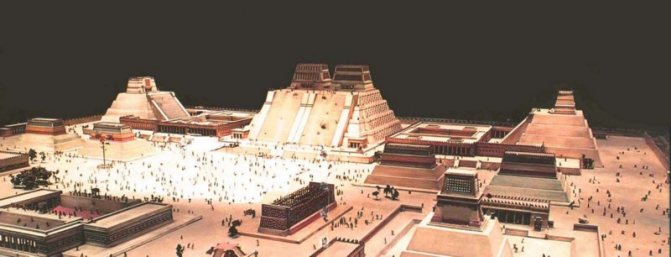

A scale model of the center of Tenochtitlán (Mexico's National Museum of Anthropology and History).
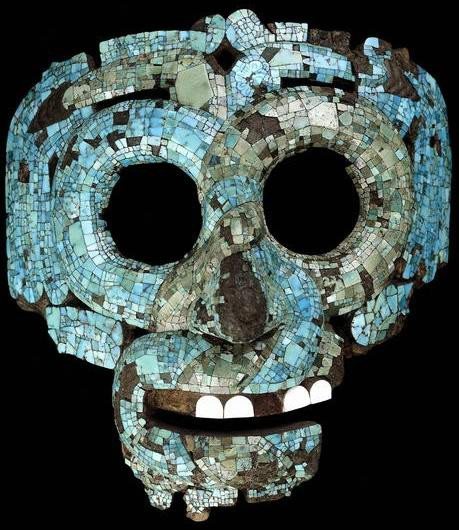

The mosaic mask of Quetzalcoatl.
Most Aztecs live on the outskirts of the city in one-story structures made of twigs and clay. There is a constant dampness, and the ground underfoot is loose. The Indians have to huddle together. Entire clans live in the houses, and people try to settle professionally in the "calpulli" quarters. Bird-feather makers, potters, stone carvers, and merchants form semi-autonomous communities within the city. They built their own schools, had their own patron gods, and fielded warriors for invading campaigns.
If the codices are to be believed, the Aztecs watered the statues with blood. Modern studies of the statues have indeed shown traces of albumin and other components of blood.
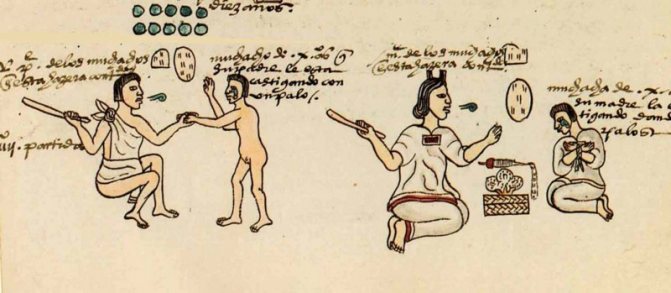

Punishing children with a stick (Mendoza Codex). Note that the hands of the girl (right) are tied.
The Aztecs established a system of general education. Until the age of 15, children were taught at home - mostly heroic epos and wise sayings. Later, the child of noble parents could go to a calmecac school (rituals, astronomy, literacy, history, public administration, laws). Those who were poorer went to the tepochkalli of their neighborhood and studied religion, trade, and crafts.
It is noteworthy that girls were not taught literacy. At 15, they were often married off, so a crash course in home economics was preferable to reading and spelling. The use of cosmetics was frowned upon. Whitened skin and black (or red) teeth were associated with prostitutes. Finally, children of all grades and genders attended cuicalli, music and dance schools.
However, in both "high" and "low" schools the emphasis was on the art of war. The training regime was extremely hard: cold water pouring in the morning, hard physical work and ritual bloodletting fostered the necessary brutality in future fighters. Interestingly, the "prestigious" Kalmekak school did not guarantee career advancement at all. Many noble offspring went to tepochkalli, where the main emphasis in their studies was on warfare. After all, fighters moved up the social ladder much faster than priests.


Commanders of Aztec armies. The feather "standard" distinguished them in battle.
Four times a day and five times at night, the roar of sea shells and the rattle of temple drums rang out over the capital. In the absence of a city clock, the priests measured time in a rather noisy way.
The wealthy occupied tall stone buildings near the temples. The latter are concentrated in the center of the city and enclosed by a protective wall of Coatenpatli ("snake wall"). The architectural dominant feature of the capital are the two 30-meter pyramids of Huitzilopochtli and Tlaloka. Montezuma's giant palace housed a zoo, a botanical garden, and an aquarium operated by three hundred people. Freaks, hunchbacks, and albinos were also kept here.


